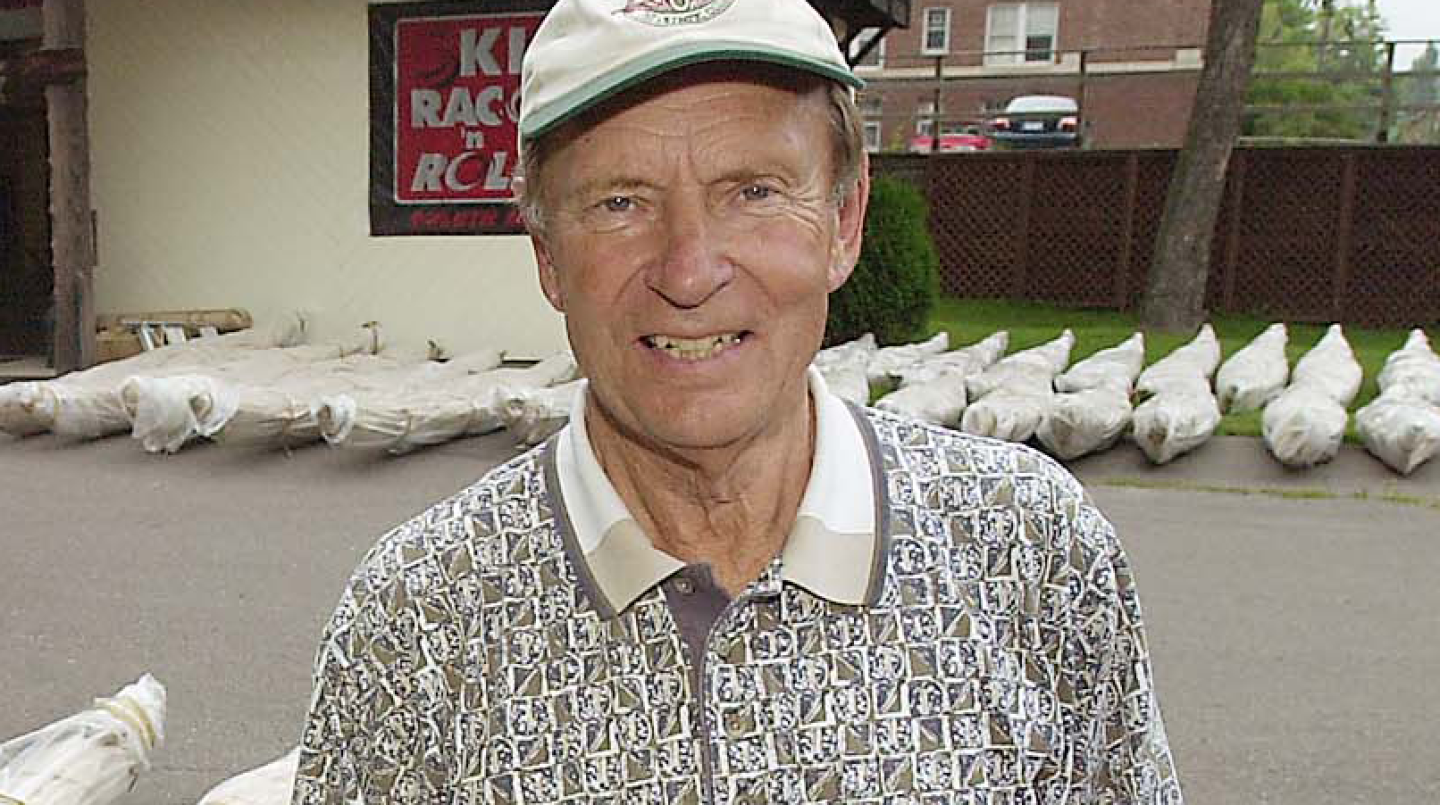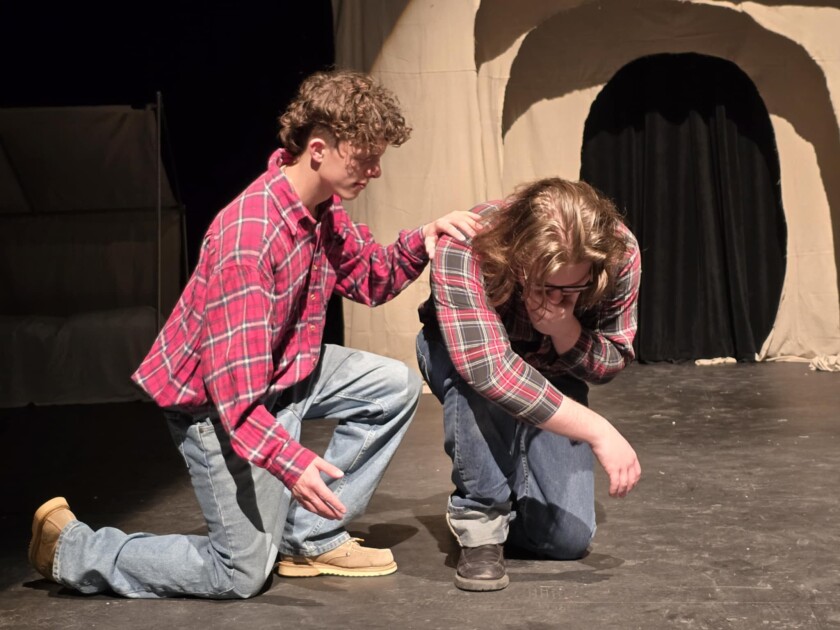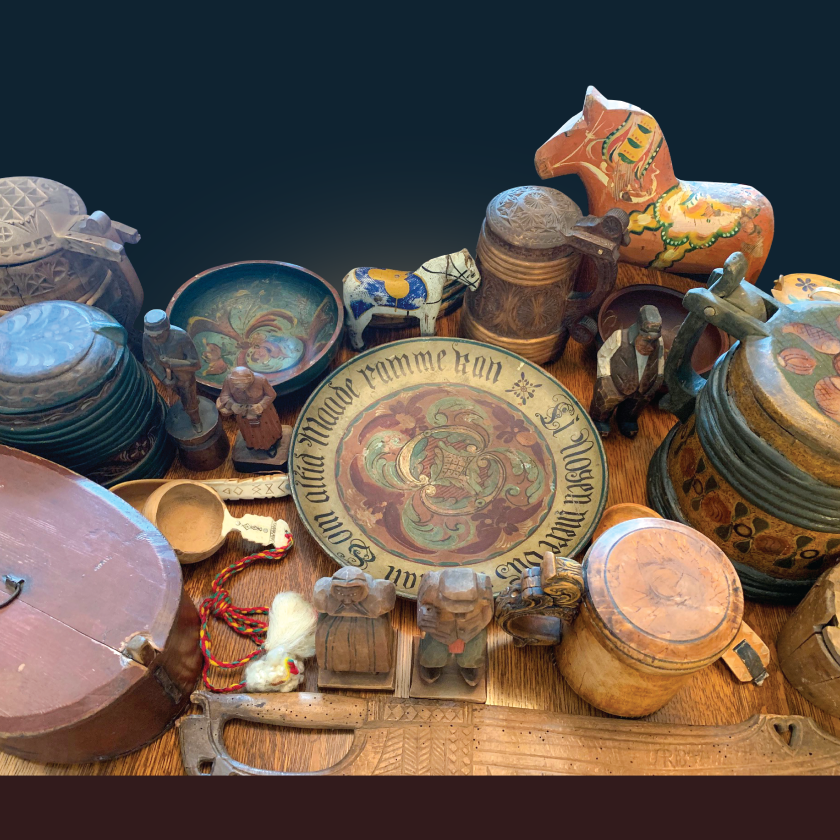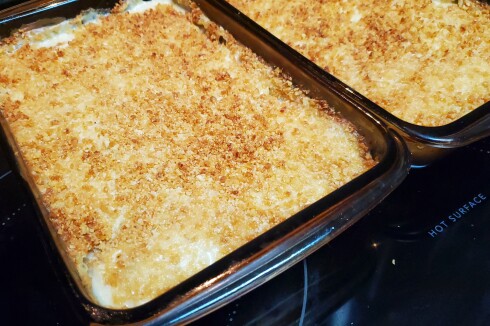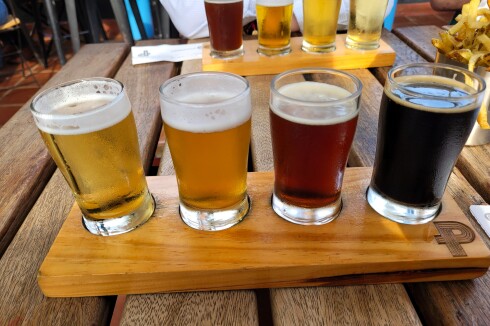DULUTH — If you knock on Maria Combs' front door in the winter, you may notice an abundance of ice cube trays stacked just outside. You may mistakenly assume that Combs is just a fan of cold drinks, but actually, it's an integral part of her tie-dye process.
Combs owns a small business, Clever Thread, where she transforms vintage and reclaimed textiles into colorful works of art.
ADVERTISEMENT
"That's my little ice factory where I harvest my ice," Combs said. "I take the cubes and place them on top of the fabric and then sprinkle the powder dyes on top of them. Or sometimes put the ice on top of the dyes."
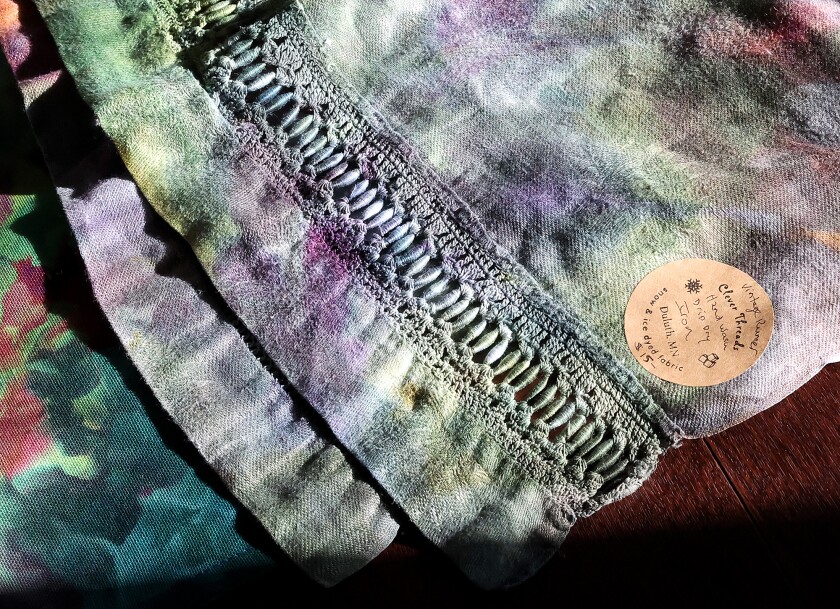
As the ice melts, the dyes seep into the white fabrics, creating a tie-dyed appearance. Combs set up her dye studio in her basement, so when she's done arranging the ice, the dye and the soda ash to ensure the colors will hold, she'll place the dyed materials into recycled plastic containers on a shelf where a heater speeds up the melting process.
"It's so cold in this basement, so I'll frequently put my little heater on a stool and pop that plastic over it to bring it up to temperature," Combs said. "Theoretically, 70 or 80 degrees is what you want for the blue colors to set."
Combs started ice dyeing in 2019 during a winter with lots of snow and cold temperatures. She already had vintage linens she'd collected over the years, and, as a weaver and fiber enthusiast, a fabric supply.
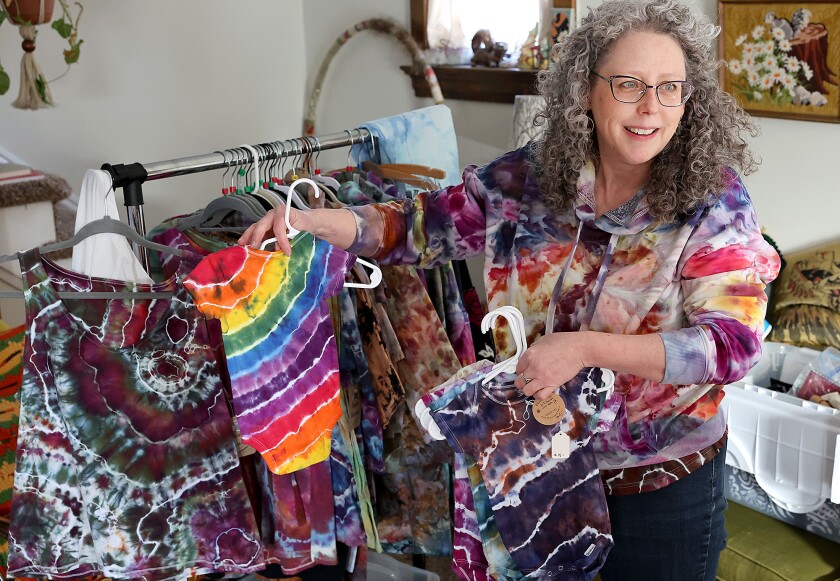
"I had all the stuff that I needed. I had the dye, I had fabric, and I was like, 'What do I have to lose? I'm just going to try it,'" Combs said. "And I just kind of went from there and kept going. It's endlessly fascinating, though, the colors the techniques, the different ways to manipulate it."
Combs started concentrating on her linen collection, dyeing old table runners, table squares and couch covers. She experimented with different linens to determine which held the dyes the best and how to manipulate the dyeing process to create specific patterns and looks.
"I was selling my vintage dyed linens when somebody said, you should do shirts, and I was like, 'Oh, probably,'" Combs said. "So I went to buy a couple of cheap undershirts just to try, and I was hooked."
ADVERTISEMENT
Combs started looking for secondhand items from Goodwill to turn into her tie-dyed creations. Her sister helps her by looking for good items with fiber content that will hold the dyes well. Combs estimated that she dyes about 75% vintage clothing items and about 25% new clothing.
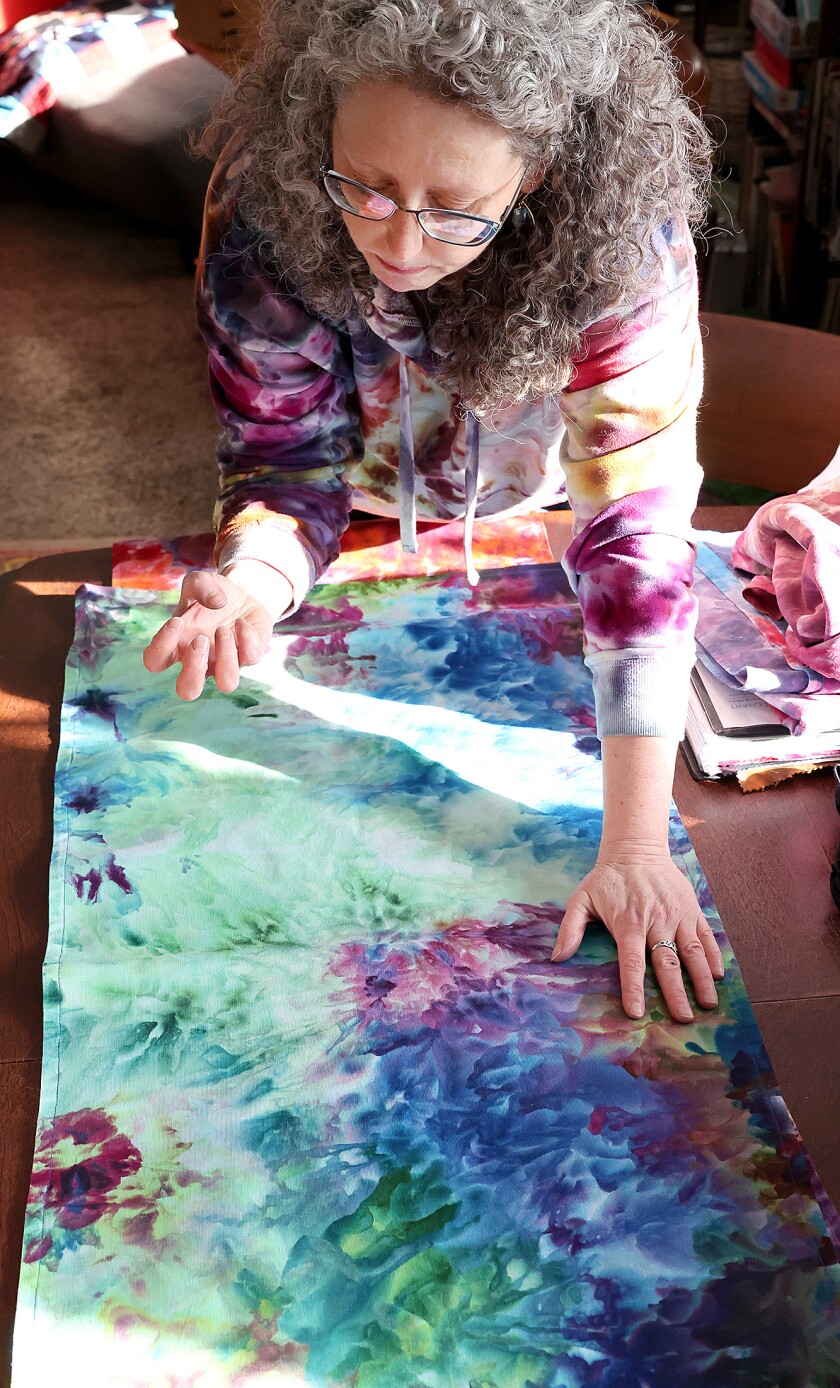
"They're still good pieces, so I like recycling them and giving them a new life," Combs said. "Plus, a lot of the newer clothing has so much polyester content that it's hard to find the good stuff."
Combs experiments with dyes and keeps a swatch book to help guide her process. The dyes look very different in powder form from the finished product, so the swatches help guide decisions about what colors to use together. Some of her dyes create a split effect with several shades from just one dye.
"For example, this is a color called Alchemist, and when I sampled it, it splits into turquoise, purple, light sage and green," Combs said. "And you'll get these freckles of color that didn't quite dissolve, and it's a pretty fascinating thing."
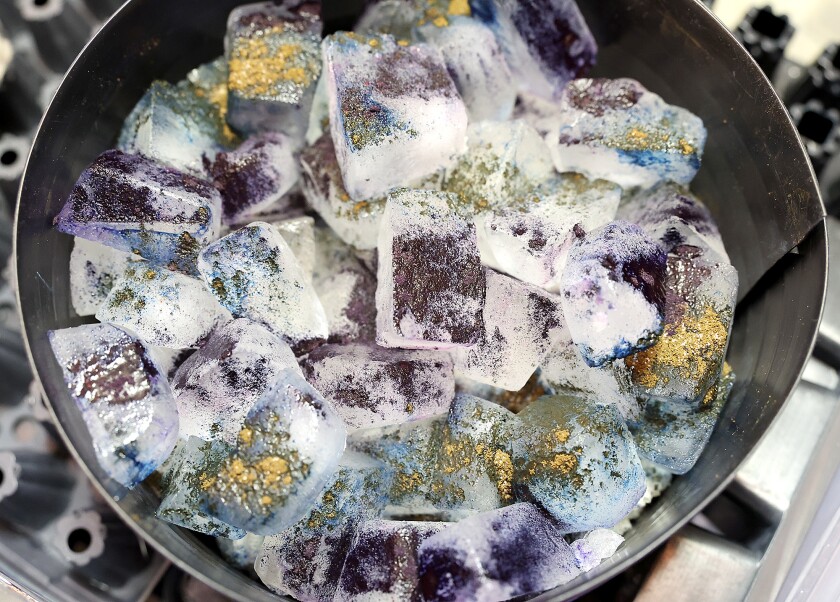
Where to find Maria Combs' creations
- Siiviis Gallery, 361 Canal Park Drive, Duluth
- Nice Girls of the North's Second Saturday monthly craft show, Spirit of the Lake Community Arts Center, 5401 E. Superior St., Duluth
- facebook.com/cleverthread
- Etsy at bit.ly/3E7QXKg





